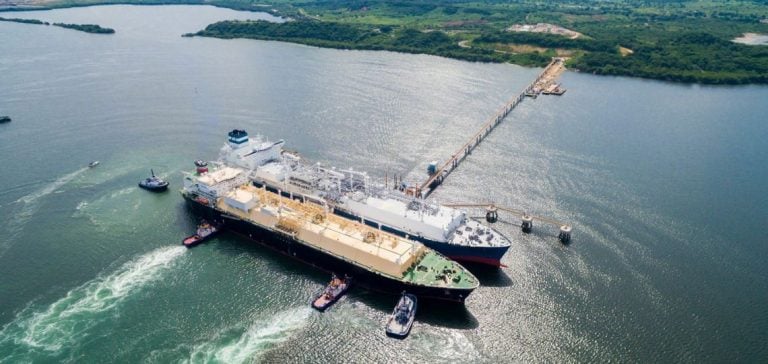In September 2024, Colombia’ s imports of liquefied natural gas (LNG) will grow considerably.
Available data show that around 150,000 metric tons of LNG have already been imported this month.
This increase, compared to the 120,000 metric tons imported in September 2023, is explained by the country’s need to compensate for its declining hydroelectric output. Indeed, water reserves in the dams used to generate electricity, which account on average for 70% of the energy produced, fell to 50.2% during the month, marking a historically low level.
Colombia, largely dependent on hydroelectricity, must therefore step up the use of its gas-fired power plants to maintain a balance in electricity supply.
SPEC LNG’s Cartagena terminal is at the heart of this strategy, with the arrival of several tankers, including the Marvel Crane and BW Magnolia, carrying LNG cargoes crucial to maintaining power generation.
An LNG supply strategy in response to declining hydropower
Falling water levels in the reservoirs of Colombian dams are forcing the authorities to resort to LNG imports.
This raw material, which supplies three back-up thermal power plants in the country, is becoming an essential element in offsetting the drop in hydroelectric production.
Dependence on these imports is all the more acute as Colombia is going through a period of low domestic natural gas production, forcing the authorities to turn to the international market to secure supplies.
LNG cargoes delivered in September 2024 come from various export points, including the Cameron LNG terminal in Louisiana.
The increase in LNG purchases on the spot market demonstrates the desire of power grid operators to secure sufficient volumes to meet growing energy needs.
The end of the El Niño phenomenon in May 2024 failed to restore sufficient water levels in reservoirs, putting further pressure on the country’s energy grid.
Inventory and electrical demand management
LNG import decisions in Colombia are closely linked to electricity demand, which in turn is affected by weather conditions and industrial requirements.
The thermal power plants that consume LNG are mainly used as back-up during periods of low hydroelectric production, but the management of stocks and imports is highly strategic.
According to local sources, it is not uncommon for a tanker such as the Marvel Crane to unload its cargo in several stages to better adapt to the real-time needs of the power grid.
Monthly import volumes, which reached 100,000 metric tons in August 2024, show a gradual upturn in imports following the end of the El Niño phenomenon.
However, this dynamic remains subject to fluctuation, depending on the capacity of thermal power plants to take over from dams.
At the same time, weather forecasts and hydrological conditions are decisive factors in planning future LNG purchases.
Challenges and prospects for the future of energy
Supplying Colombia with LNG is not just a short-term response.
The country’s ability to diversify its energy sources, while ensuring continuous electricity production, remains a priority.
The increased use of thermal power plants clearly demonstrates the country’s dependence on LNG in a context of reduced hydroelectric production.
This situation raises questions about the sustainability of the country’s energy model, which must balance hydroelectricity, domestic natural gas and LNG imports.
Colombia’s energy sector faces major structural challenges.
The ability to adjust supply according to climatic fluctuations and domestic natural gas reserves remains a major challenge.
Market players are closely monitoring the evolution of LNG imports and their potential impact on energy production costs.
LNG’s role in Colombia’s energy strategy therefore looks set to grow in the short term, particularly in times of stress on other energy sources.






















